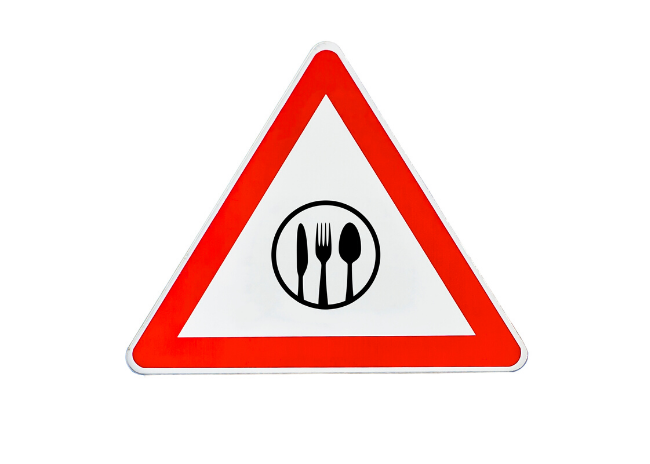The restaurant industry’s decline due to COVID-19 may have traveled a swift and direct path, but the road to recovery remains a long and winding one that will undoubtedly be riddled with potholes and other unwanted surprises.
For example, as cases throughout the country continue grow, more than half of the states hit pause on their reopening plans or took other steps to halt the spread of the coronavirus. These steps include shutting down high-capacity businesses, such as restaurants and gyms, as well as halting elective surgeries and even requiring people to wear masks.
In fact, the estimated percentage of U.S. restaurants permitted to offer on-premises dining totaled 82% for the week-ending July 12, per data from The NPD Group. This marks an 8% decline from the previous week. Most of the change was in California where most restaurants were once again off-premises-only statewide, as of the week of July 12.
As a result of the dining room closures, California’s full-service restaurant transactions declined 6 points to minus 51% versus year ago, the lowest percentage of any state, per NPD. In the week ending July 19, FSR volume in California will be completely off-premises, which will lead to restaurants in the state ramping up delivery programs, streamlining menus and repurposing parking lots as temporary drive-thru lanes. As the state with the nation’s largest number of restaurants, this will certainly contribute to the reshaping of restaurant operations in the new normal.
California may not be the only state taking such drastic actions. Restaurants and bars in New York may face a similar fate after reports emerged over the weekend of mass gatherings of non-socially distanced patrons. New York Governor Andrew Cuomo is clearly relying on operators to enforce the reopening guidelines. “The bad restaurant and bar owners are going to make it worse for the good ones,” Cuomo said.
The short of it is, places like Chicago and New York don’t want to revert to more drastic measures to prevent the spread of the virus but will do so if push comes to shove. "We did the impossible as New Yorkers — we stepped up and conquered the COVID-19 virus and now we have to protect the progress that we have made," Cuomo said.
Bars seem to be a particular hotspot at the moment. In Chicago, for example, Mayor Lori Lightfoot restricted any bars without a retail food license from serving patrons indoors effective Fri., July 24. If these businesses have the ability to do so, they can serve patrons outdoors. This was one of several steps the city took that spanned several business types and it came as the city’s number of positive cases among people 18 to 29 years old continued to grow faster than any other demographic. And it came one week after Chicago had to shut down a bar for not following the city’s reopening guidelines.
Chicago is not alone in its enforcement of its reopening regulations that pertain to bars and restaurants. Over the weekend, 14 Minnesota bars and restaurants received warnings for violating the state’s COVID-19 safety guidelines. This came after a 9-day sweep of more than 900 bars and restaurants by the Minnesota Department of Public Safety. The goal of the sweep was to ensure employees were properly wearing masks, the establishments were serving no more than 50% of their capacity and tables were set more than 6 feet apart.
And state and local governments are not the only ones monitoring how well restaurants and bars adhere to reopening regulations. In Wisconsin, diners are using Facebook to rate restaurants’ performance in meeting health-related guidelines aimed at stopping the spread of COVID-19. According to the Milwaukee Journal Sentinel, the Facebook group uses a “Granny rating” to score restaurants. Zero grannies means that grandma, and other people with health issues or who are at risk, should stay home. Four grannies, the page's highest rating, indicates members think it is safe enough for even those in high-risk groups.
As a result of the rising number of positive COVID-19 cases and subsequent restrictions placed on restaurants and other operators, it comes as no surprise, then, that overall industry performance struggled for the week of July 12. Total customer transactions at U.S. restaurant chains declined by 14% compared to the same week last year, per data from The NPD Group. The decline is 3% greater than the previous week.
After showing signs of strength the week prior, quick-service restaurant chains drove the decline, decelerating 4 points to -13% year-over-year for the week-ending July 12. In contrast, full-service restaurant chains saw transaction declines of 26%, which represents a 3-point improvement compared to the previous week.
“Last week when quick service restaurants drove the improvements in restaurant customer transaction declines, I highlighted the apparent divergence in trend between quick-service and full-service restaurants, supported by sound reasoning about on-premises and off-premises models, the pace of reopening and reclosing, and the resurgence in COVID-19 cases around the country,” David Portalatin, NPD food industry advisor. “The flip in declines this week from quick-service restaurants to full-service restaurants is a reminder the world is unpredictable today and we should expect twists and turns on the bumpy road to recovery. Still, the pre-COVID trend that favored quick-service restaurants and the segment’s expertise in offering off-premises services, like drive-thru and delivery, has accelerated during the pandemic and will continue to do so in the long-term.”




